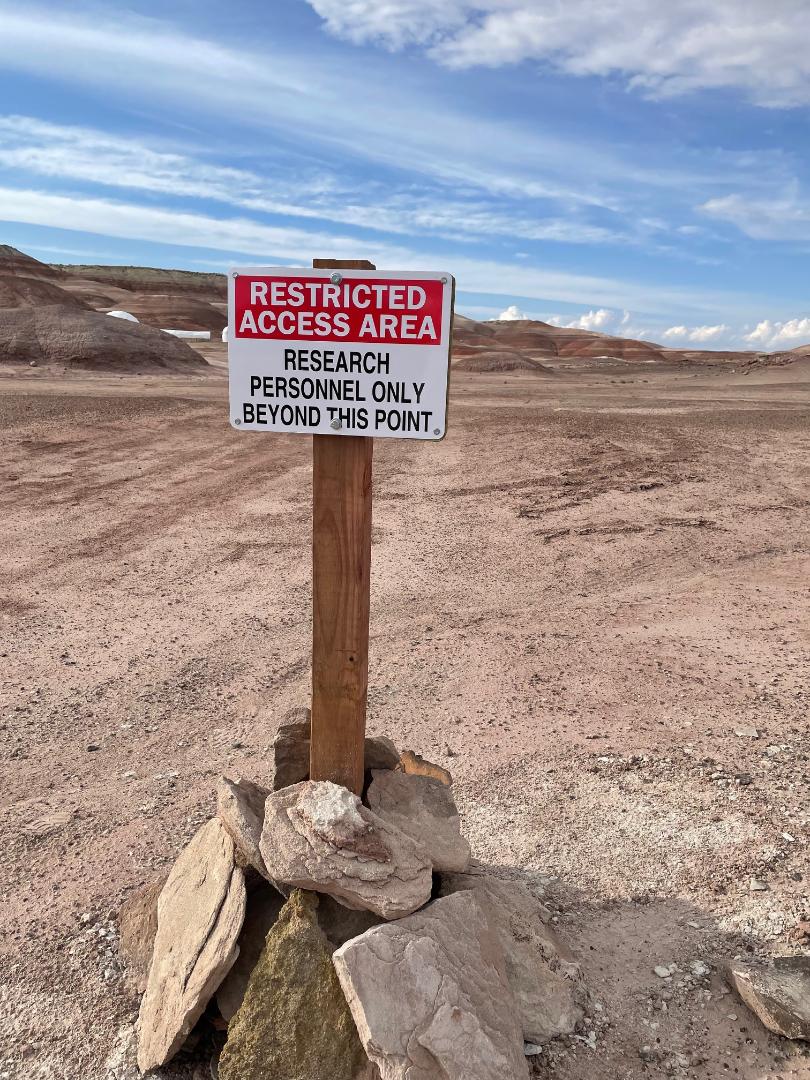
Tourists a (major) problem at Mars analog site
The Mars Desert Research Station has become something of a tourist destination.

Dr. Shannon Rupert is an ecologist and educator who has spent more than 20 years doing Mars analog research. She is the longtime director of the Mars Desert Research Station (MDRS), which is owned and operated by The Mars Society. MDRS hosts researchers who conduct their work while in a simulation, living as if they were on Mars. For more details about the MDRS program, please visit: mdrs.marssociety.org. Rupert contributed this article to Space.com's Expert Voices: Op-Ed & Insights.
It's early spring in the southern Utah desert. After a year-long shutdown in operations due to COVID, I'm back at the Mars Society's Mars Desert Research Station (MDRS), where I serve as director, preparing to welcome two U.S.-based crews to the facility. After a particularly hard day of working on repairs to the water system, I'm awakened in the night by my dogs barking. I look out the small window of my bedroom, which is separated from the station by two hills, and I can see what appears to be bright light shining on one of the buildings. While I struggle to make sense of it, my dogs quiet down, so I drift back to sleep, thinking I hadn't noticed the moon was full.
Months later, our director of public relations receives an email. Attached is a photo of MDRS, all lit up, with the night sky emblazoned above it. In the email, the photographer gives details of his long-duration exposures and how he lit up the station during the night I just described, and spent hours photographing the night sky. He's proud of his work, and thinks nothing of sharing how he trespassed on private land, photographed an entire field station without permission and stayed onsite while I slept a few meters away, unaware of this violation. It still unsettles me thinking about it. Imagine if someone did that in your own backyard.
Related: The 9 coolest simulated space missions
Fortunately, no crew was in residence at MDRS that night. Visiting teams expect that they may see a person or two when they are out in the field, or someone viewing the station from the road off in the distance. But isolation and a suspension of disbelief regarding our crew simulations are major components to space-related analog research. Future astronauts on the Red Planet will experience a level of isolation that no human has ever gone through, and a large part of MDRS research, led by its crews, focuses on that challenge.
Making this Mars simulation as realistic as possible is key to that research. Crews can accomplish this, but not with constant outside interference. What hinders that effort are drones filming crew members from outside their windows, or people wandering around the facility, poking their heads in buildings or sitting on the hill just outside the front airlock before daybreak. All of these are things that have happened in the last few months at our station in southern Utah. With a growing interest in space and the overload of information on the internet, visitors are far more frequent at MDRS than in the past.
I enjoy welcoming the occasional guest, giving them a close up look of the station when crews are away. One of the best parts about this job is seeing someone's eye light up at the possibility of humans actually going to the planet Mars. That all changed with COVID. Many people fled the reality of the pandemic in their daily lives by escaping to the American Southwest, where they could practice social distancing by exploring the outdoors. There was an increase in websites and social media sharing places to visit.
Get the Space.com Newsletter
Breaking space news, the latest updates on rocket launches, skywatching events and more!
Unfortunately, MDRS became one of those sites for tourists, and on the internet and in the nearby town of Hanksville, people are saying we are open to the public and/or the station is accessible to everyone. This is not true. From the moment I returned to the station earlier this year, I have spent more time chasing people off the property than welcoming them. Some are confused, some are polite but disappointed, others have been threatening enough that the local police needed to be called, but all felt they had a right to be here.
Related: What would it be like to live on Mars?

Our staff has done what it can. We have posted signs defining our lease, letting people know that, according to State of Utah law, MDRS is located on private property and drones are prohibited. We have signs restricting access to the area. We have contacted every website we could find that had misinformation about us, and I've had meetings with local town and business leaders about this growing problem. Is it working? Not all the time, but it is better.
Social media is a huge challenge because misinformation travels like wildfire. People post a photo, and everyone wants to go out to get that same photo on their own. For a while, we had people every day walking in and around MDRS. It turned out that someone had posted a photo on social media with the coordinates to MDRS. Lately, every time I go north of the facility, I see people on a certain hill. I guess that area is the new darling of social media. That's a relief, because fewer people in the area means less interruption of the important work we do here, which will help achieve the Mars Society's goal of putting boots on the Red Planet.
Follow us on Twitter @Spacedotcom or Facebook.
Join our Space Forums to keep talking space on the latest missions, night sky and more! And if you have a news tip, correction or comment, let us know at: community@space.com.









